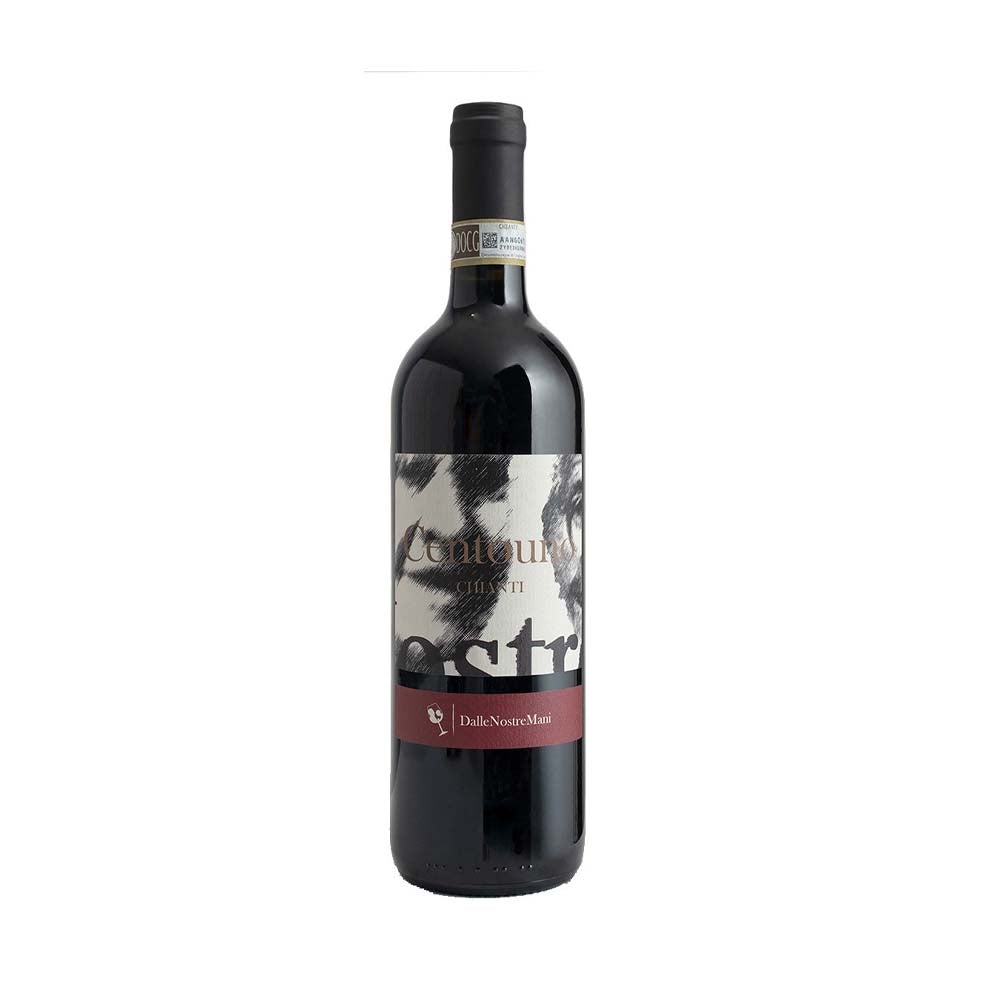
Chianti 101 | Dalle Nostre Mani
DENOMINATION: Chianti Classico DOCG
TYPE: red
GRAPE VARIETY: 80% sangiovese 20% canaiolo
ORIGIN: Italy, Tuscany
AGEING POTENTIAL: 5 years
SERVING TEMPERATURE: 16-18° C
GLASS: wide red wine glass
ALCOHOL: 13% vol.
FORMAT: 75 cl
THE WINE
TECHNICAL SPECIFICS
FRESHNESS: ◼︎◼︎◼︎◼︎◻︎
BODY: ◼︎◼︎◼︎◼︎◼︎
SAPIDITY: ◼︎◼︎◼︎◼︎◻︎
SOFTNESS: ◼︎◼︎◼︎◼︎◻︎
TANNICITY:◼︎◼︎◼︎◻︎◻︎
NOTES BY OUR SOMMELIERS
👁 a beautiful deep ruby red;
👃🏻 the nose expresses a fruity bouquet (blackberry and morello cherry above all), intensity and vinosity with a slightly spicy finish
👄 the palate is characterised by good drinkability also due to the balance between fresh and polyphenolic components.
FOOD PAIRINGS
Chianti 101 is a balanced, fairly structured and velvety wine. It prefers intense, persistent dishes with savouriness, unctuousness and succulence. Ideal with pasta al sugo, while a perfect territorial pairing is with Fiorentina steak.
WINE-MAKING AND REFINEMENT
This great Tuscan red is made from a blend of Sangiovese and Canaiolo, and is produced from vineyards over thirty years old, cultivated using the traditional Tuscan "capovolto" system. The label is a dedication to an elderly man, Novello Cioni, who collaborated with the vine-dressers in vineyard activities until he was 101 years old. Harvesting is manual in the second half of September, in boxes, with careful selection in the vineyard. After the grapes are crushed, vinification takes place in steel. The wine matures for a year in a large chestnut barrel.
YOU WILL LOVE IT FOR...
its balance and smoothness.
TERROIR OF ORIGIN
TERROIR
The area is Chianti Classico is unique for the cultivation of grapes. Its history is centuries old, a land civilised since Etruscan times. The 'capitals' of Chianti are the cities of Florence and Siena and its lands straddle the two provinces: it covers 70,000 hectares that include the entire municipalities of Castellina in Chianti, Gaiole in Chianti, Greve in Chianti, Radda in Chianti and part of those of Barberino Tavarnelle, Castelnuovo Berardenga, Poggibonsi and San Casciano in Val di Pesa. The vineyards face south and west at 360-530 metres above sea level.
The soil consists of marly limestone, schist marl, clay schist and, subordinately, sandstone. The skeleton is essentially composed of alberese and galestro, ideal for sangiovese, and sandstone and clay in some individual vineyards such as Casi. Sangiovese, the region's main grape variety, is a great interpreter of the unique characteristics of the land of the Black Rooster.
Chianti Classico can be produced from Sangiovese grapes with a minimum of 80%, and a maximum contribution of 20% from other red grapes. Since 1996 it has been possible to produce appellation wines using pure Sangiovese, and since 2006 Chianti Classico can only be produced with red grapes.
WINERY
Dalle Nostre Mani is a company founded by Giulio and Lapo, two inseparable friends. The wine-growing area of Fucecchio was characterised by a slow and progressive abandonment of the practice of viticulture by the elderly local wine-growers, who had given it up for reasons of low profitability. Today, thanks to the far-sighted work of two young Tuscan winegrowers, a large part of the vineyards and with them ancient vines are being recovered, thanks to the collaboration of 14 elderly winegrowers and by cultivating the vineyards organically.
The vineyards feature only Tuscan grapes, such as pugnitello, round leaf, abrostine, and abrusco, extending as far as the protected oasis of Padule di Fucecchio. In addition to native varieties in danger of extinction, the winery also cultivates Sangiovese, Canaiolo, Trebbiano and Malvasia; each of the winery's wines is a tribute to the elderly winegrowers with whom they have collaborated to recover an oenological heritage, which they have helped to create a 'memory bank'.

When will I receive my order?
If the bottle is in stock it will be sent immediately and you will receive it in a couple of working days.
Is the order renewed?
No, this product is not bound by any type of subscription and cannot be renewed.
Is there a minimum number of bottles?
No, you do not have to order a minimum quantity of bottles: you can choose to receive just one bottle of each type.

This product has no reviews yet.
